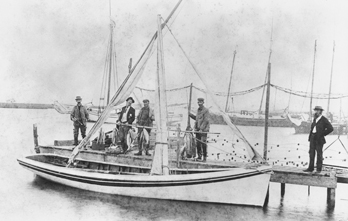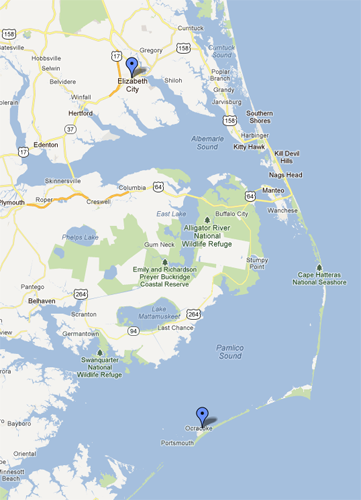Shad Boats

Shad boats are the official state boats of North Carolina. They were first developed around Roanoke Island after the Civil War, when a shortage of suitable trees for periaugers and an increase in fishing required strong, shallow-draft workboats. This boat type has several names, all linking a locality with the vessel's use, including "Dare County shad boat," "spritsail shad boat," "Albemarle Sound boat," "Croatan fishing boat," and "Pamlico Sound boat." The design was limited geographically to the area from Elizabeth City to Ocracoke Island and neighboring sounds. (North Carolina's shad boats should not be confused with late-nineteenth-century V-bottom shad boats made in Florida, Georgia, and South Carolina.)

Shad boats were first built in the 1870s by George Washington Creef, who combined traditional split-log techniques with conventional plank-on-frame construction. The original Creef design was extremely successful and in high demand by coastal fishermen. Creef taught many others to build this vessel, which soon became one of the better and more handsome North Carolina workboats. His boat works produced shad boats from the 1870s through the early 1930s, while other builders turned out similar designs.
The keel was a hewn white cedar trunk, and the curved frames were cut from buttress roots. The hand-shaped keel log reflects descent from the split-log dugouts (periaugers) that utilized a similar centerpiece. Early shad boats had round bottoms with curved frames and a high, square stern to hold nets. Combining cypress frames with cedar or juniper planking made the craft extremely durable. The round bottom, wide beam, and full body, coupled with an upright, raked stem and a raking heart-shaped stern, made the boat extremely stable even in rough water. Most shad boats had no deck except for narrow washboards, or "side-decks." They were powered by a large sprit mainsail and a jib, but many also carried a topsail and occasionally used a flying jib. The combination of the round bottom, sturdy hull, and multiple sails helped fishermen maneuver in the unpredictable sounds.

Gas engines gave later boats greater versatility, but cheaper wood, overuse, and engine vibration made these newer boats much less durable than their sailing predecessors. Engine-powered boats did not require sophisticated hull designs that worked most efficiently in variable winds, so few of the complex, round-hull shad boats were built after the 1920s. There are five shad boats in the North Carolina Maritime Museum in Beaufort, including an original Creef boat.